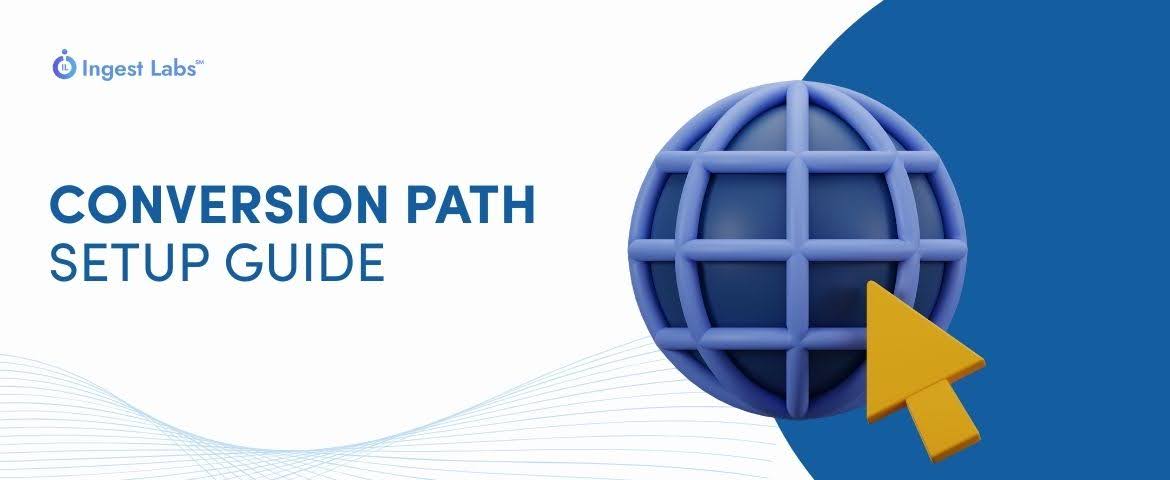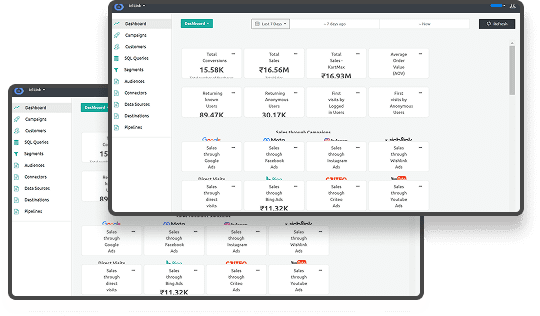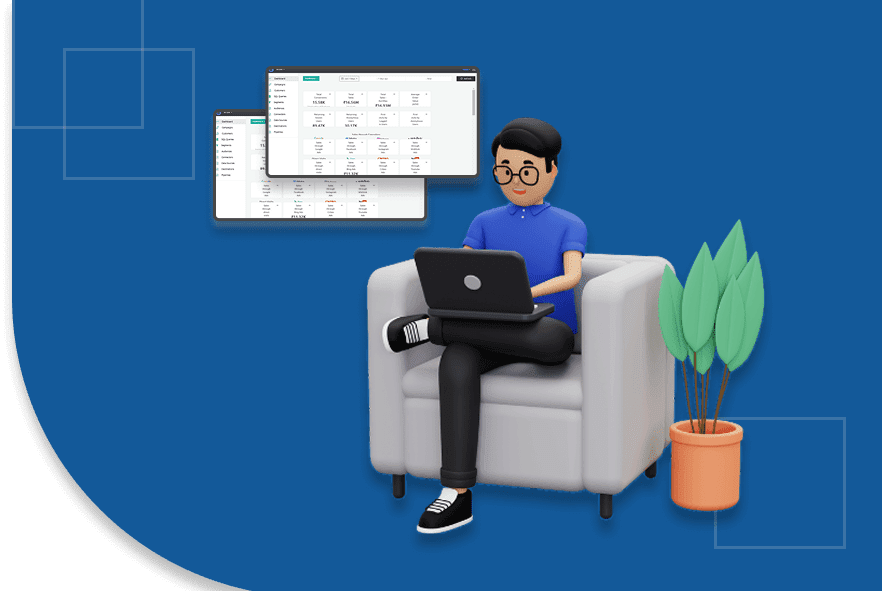How to Set Up and Optimize Conversion Path Analysis
Have you ever wondered why visitors abandon their carts or leave your site without converting, despite high traffic levels?
This is a common challenge for many online businesses. While attracting visitors is relatively easy, getting them to complete a desired action, whether purchasing, signing up for a service, or downloading content, proves more difficult.
Data shows that over 70% of online shoppers abandon their carts before completing a purchase. For e-commerce sites, this represents a significant lost opportunity. The issue lies in not understanding visitors' journey before they leave. Without insight into their behavior, optimizing the user experience and guiding them toward conversion is nearly impossible.
Moreover, 61% of users expect to find what they want within five seconds of landing on a website. If they don't, they are likely to leave. Additionally, 88% of online users won't return to a site after a bad experience, emphasizing the importance of a seamless user journey.
Tracking the sequence of actions a visitor takes from landing on your site to completing a desired action is key to improving your conversion rates. Businesses can pinpoint friction points by analyzing these paths, adjusting strategies, and improving user experience and ROI.
In this guide, we’ll show you how to set up and optimize conversion path analysis, ensuring you can turn more visitors into loyal customers.
What Is Conversion Path Analysis?
Conversion path analysis refers to tracking and analyzing the sequence of actions a visitor takes from the moment they land on your website until they complete a desired action (conversion). These actions include visiting various pages, clicking on CTAs, downloading content, or purchasing.
Understanding how visitors progress through their journey allows you to uncover opportunities for optimization at every stage of the funnel. Conversion path analysis provides essential insights into where visitors are most engaging, where they are dropping off, and how you can intervene to guide them to complete your desired actions.
With this foundational understanding of conversion path analysis, let’s explore why it is vital to your marketing strategy.
Why is Conversion Path Analysis Important?
Conversion path analysis is about providing customers with the best possible experience, eliminating obstacles, and maximizing your ROI. Here are the main reasons why conversion path analysis is essential for improving your business outcomes:
1. Identify Pain Points in the Conversion Journey
Conversion path analysis helps you pinpoint the exact places where visitors abandon their journey, offering invaluable insights into what’s hindering your conversions. By spotting these friction points, you can focus on optimizing those stages, ultimately improving the customer experience.
- Friction Detection: With the right tools and analysis, you can find where people drop off or lose interest, whether it’s a confusing form, irrelevant content, or an overly complex offer.
- Improve the Path: Once pain points are identified, you can make targeted improvements to reduce friction and keep visitors engaged.
2. Optimize Your Marketing Spend
Understanding which conversion paths work can help you allocate your marketing budget more effectively. This ensures that your spending is focused on the strategies that lead to the highest conversion rates, allowing you to maximize ROI and reduce wasted spending.
- Track Success: Conversion path analysis lets you see which content or tactics drive the most conversions, helping you invest more in high-performing channels.
- Cost Efficiency: Rather than spreading your budget thin, you can make data-driven decisions to refine your marketing strategies.
3. Personalize User Experience for Higher Engagement
One of the most significant advantages of conversion path analysis is its ability to reveal insights about your customers' behavior and preferences. With this information, you can tailor their experience and guide them more effectively through the buyer’s journey, increasing the chances of conversion.
- Tailored Content: By understanding your visitors’ actions, you can provide content that directly addresses their pain points, which boosts engagement and conversion likelihood.
- Enhanced Targeting: With personalized content, emails, and offers, you can ensure your messaging is relevant to the visitor's decision-making process.
4. Improve Retargeting Strategies
Understanding the journey visitors take before converting also helps craft better retargeting strategies. If visitors drop off before completing a conversion, you can design specific retargeting ads or follow-up emails to re-engage them.
- Tailored Ads: Create ads that speak directly to users’ previous interactions with your site, nudging them back to your conversion path.
- Effective Messaging: Retargeting with relevant offers can dramatically improve conversion chances for users who didn’t convert the first time.
5. Increase Conversion Rate Optimization (CRO)
You can implement a continuous improvement cycle by continually analyzing your conversion paths. Regular updates and tweaks based on real-time data improve your conversion rates, making your site more efficient and profitable.
- Iterative Improvements: Regular analysis lets you test different tactics, such as CTA placement, content formats, or design changes, to improve your conversion rate.
- A/B Testing: Conversion path analysis also makes it easier to run A/B tests to see which elements of your path yield the best results.
At Ingest Labs, we provide solutions like Ingest IQ, Ingest ID, and Event IQ that allow you to track user behavior and customer journeys across web and mobile applications. These insights help you refine your strategies, reduce drop-off rates, and improve conversion rates, all while ensuring privacy compliance.
Let's look at a practical example of how conversion paths work to illustrate this process further.
How Conversion Paths Work: Examples to Guide Your Analysis.
To make the concept of conversion path analysis more straightforward, let’s look at an example. Imagine a visitor who lands on your website through a blog post:
- Search: The journey starts with a visitor searching for a solution to a problem. For instance, they might search, “how to increase website traffic.” This search indicates their intent to find relevant information to solve a specific challenge.
- Content: The visitor clicks on your blog post titled “10 Proven Strategies for Increasing Website Traffic.” This content is informative and aligns with the visitor’s search query. By addressing their needs in a helpful and actionable way, you’ve captured their attention and encouraged them to stay on your site.
- CTA: Within the blog post, a clear Call to Action (CTA) directs visitors to a landing page to download a detailed eBook on the topic. The CTA is tailored to their interest, providing additional value and motivating them to take the next step.
- Conversion: The visitor fills out the form to download the eBook, successfully converting from a website visitor to a lead. This is the pivotal moment where a visitor takes action based on the value you’ve provided, moving them closer to becoming customers.
- Thank-You Page: After the download, the lead is directed to a thank-you page. This page acknowledges their action and offers a secondary offer, such as a free consultation or a related webinar. This secondary offer nurtures the lead and encourages them to engage further with your business.
This is a simple, linear conversion path. However, absolute conversion paths may involve multiple touchpoints across different channels, such as email campaigns, social media, and paid ads. With tools like Ingest Labs’ Ingest ID, you can track and analyze every touchpoint in the customer journey, enabling you to fine-tune your conversion paths for optimal performance.
With this example in mind, let’s review the five essential steps to creating an effective conversion path.
5 Easy Steps to Create an Effective Conversion Path
Creating an effective conversion path requires a clear strategy, optimized landing pages, and nurturing follow-up methods. This section will walk you through five key steps to build a path that attracts, engages, and converts visitors into loyal customers.
Step 1: Define Your Conversion Strategy
Before diving into conversion path analysis, it’s essential to have a clear strategy in place. Define your goals and understand your buyer’s journey to ensure your efforts focus on the right areas.
Start by aligning your conversion path analysis strategy with your marketing goals. Think about the following questions:
- What pain points are we solving?: Understanding your target audience's pain points allows you to create content and offers that directly address their needs.
- What offer will compel visitors to share their information?: Determine what offer will persuade your visitors to take action, whether it’s a free trial, an eBook, or a discount.
- Which stage of the buyer's journey are you targeting?: Are your visitors in the awareness, consideration, or decision stage? Tailor your messaging and CTAs based on where they are in the journey.
Answering these questions will help you ensure that your conversion path strategy aligns with your marketing goals. This clarity will also help you measure success and optimize the underperforming paths.
Step 2: Drive Traffic to Your Conversion Path
Attracting exemplary visitors to your site is essential for building an effective conversion path. Here are some strategies you can use to drive traffic:
- SEO-Optimized Blog Content: Create valuable content around high-ranking keywords to attract organic traffic. This will help you attract visitors who are already interested in your solutions.
- Paid Media Ads: Use paid media ads like Google Ads and Facebook Ads to target specific demographics and direct them to relevant landing pages.
- Email Promotions: Engage your existing email list by sending targeted emails with special offers and promotions. Encourage them to visit your site and engage with your content.
- Social Media Efforts: Share content on social platforms, use strategic hashtags, and engage with followers to increase visibility and drive traffic.
At Ingest Labs, we provide Event IQ, a customer data platform that can help you analyze traffic sources and understand where your visitors are coming from. This data is invaluable when adjusting your marketing strategies to optimize for the best-performing traffic channels.
Step 3: Optimize Landing Pages for Conversion
Once you’ve attracted visitors, your landing page is where the magic happens. Here’s how to optimize your landing pages for maximum conversions:
- Minimize Distractions: Remove unnecessary elements such as navigation bars, footers, or unrelated links that could divert the visitor's attention from your CTA.
- Strong Headlines and Concise Copy: Use compelling headlines that address the visitor’s needs immediately. The copy should be clear, concise, and action-oriented.
- Simple Forms: Keep your forms short and only ask for essential information. The more fields you ask visitors to fill out, the less likely they are to complete the form.
Step 4: Create a Thank-You Page to Boost Conversions
The thank-you page is an often-overlooked opportunity to continue nurturing leads. Here’s how to make the most of it:
- Express Gratitude: Acknowledge your visitor’s action with a simple “Thank you” message.
- Provide Immediate Access: If the offer was a downloadable resource, make it easy for the visitor to access it immediately.
- Offer a Secondary Offer: Use the thank-you page to present another offer or CTA that guides the visitor to the next step in their journey, such as booking a demo or signing up for a webinar.
Using Ingest ID, you can track visitor actions across different stages and devices, ensuring you provide the most relevant offers to each lead at the right time.
Step 5: Use Follow-Up Emails to Nurture Leads
Once a visitor converts, your job is far from over. Follow-up emails are an important part of lead nurturing. Here’s how to keep the conversation going:
- Thank You Emails: Send an email confirming their action (e.g., downloading an eBook) and include any additional resources that could help them.
- Lead Nurturing Workflows: Set up a series of emails that gradually guide your leads through the following stages of their journey, offering valuable insights, case studies, or demos.
Incorporating Ingest Labs’ solutions like Event IQ can help you track these interactions and ensure your nurturing efforts are based on real-time data, improving engagement and conversions.
Now that we've covered the five essential steps, let's explore strategies to refine your conversion path for even better results.
Optimizing Conversion Paths
Implementing key strategies can elevate your conversion paths and drive better results. Let’s explore some proven techniques that can refine your approach and help maximize the effectiveness of your conversion funnel.
- Simplify the Sign-Up Process
Reducing friction during the sign-up process is vital. Offer easy and seamless sign-up options, such as social logins or one-click registration, to make it as easy as possible for users to convert. A streamlined process lowers barriers and increases conversion rates. - Optimize for Mobile
With mobile usage accounting for significant web traffic, your landing pages and conversion paths must be optimized for mobile devices. Ensure fast load times, user-friendly layouts, and responsive design to engage mobile visitors and reduce bounce rates. - Targeted Landing Pages
Personalizing landing pages based on user behavior and demographics can significantly improve conversion rates. By tailoring the messaging, offers, and design to meet the needs of different visitor segments, you create a more compelling and relevant experience that drives action. - Post-Conversion Nurturing
Once visitors convert, don’t stop there. Implement post-conversion strategies like retargeting ads and email campaigns to continue nurturing leads. This ongoing engagement helps keep your brand in mind and guides leads further down the funnel, increasing the likelihood of additional conversions.
With Ingest Labs' suite of tools, including Event IQ and Ingest ID, you can continually track and optimize strategies based on real-time data. These tools help refine your marketing approach, improve conversion paths, and ensure higher ROI. Event IQ, for instance, gives a comprehensive view of your audience’s behavior, enabling smarter, data-driven decisions. Integrating these tools allows you to personalize experiences and streamline your conversion efforts.
Now that you’ve learned how to optimize your conversion paths, let’s look at how you can analyze them to ensure continuous improvement.
Conclusion
Setting up and optimizing conversion path analysis is a powerful strategy for improving lead generation and boosting conversion rates. By analyzing visitors’ behaviors, optimizing key touchpoints, and nurturing leads post-conversion, you can ensure your marketing strategy is more effective and results-driven.
Ingest Labs offers comprehensive tools like Ingest ID, Ingest IQ, and Event IQ to help you track, analyze, and optimize your conversion paths with precision and in full compliance with privacy regulations. Start using these insights to refine your marketing strategies, and watch your conversions improve!
Ready to take your conversion path analysis to the next level? Contact Ingest Labs today to learn how our solutions can help you improve your conversion strategies and drive better results!






